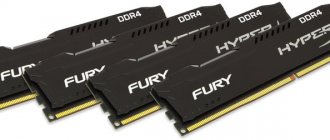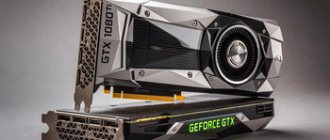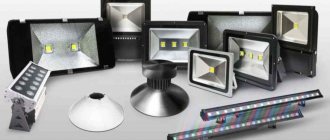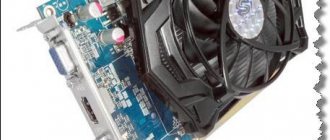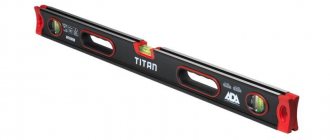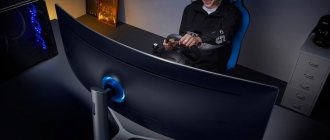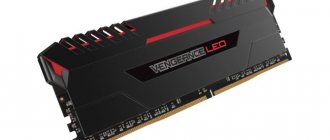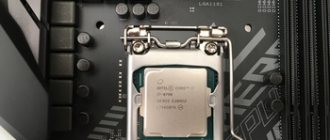The model of the graphics chip, the amount of video memory, the bus bandwidth - it would seem that you only need to decide on the main criteria, and the question of choosing a video card is closed. However, even with a superficial acquaintance with the offerings on the market, it becomes clear: a huge assortment is available to the buyer. It is so huge that the cost of two models with similar characteristics can differ significantly.
In fact, the difference between them is much more significant. Each product is designed to suit a specific level of needs and budget. Therefore, before making a responsible purchase, you need to understand what exactly numerous manufacturers offer and which of them are trustworthy.
Reference sample
Trends in the video card market are set by two competitors: Nvidia and Advanced Micro Devices. First, their new products are shown to a wide audience. This happens at specialized presentations, where representatives of each company demonstrate the capabilities and potential of a fresh graphics chip of their own production.
To do this, they use “reference video cards” - standard (initial) samples of the product. Based on them, the public is simply introduced to the capabilities of the new chip. Therefore, there can be no talk of any unnecessary costs such as advanced cooling, quietly running coolers or serious overclocking.
Of course, reference models of video cards are produced in limited editions. Especially for such events. Some of them still go on sale, but they are of interest either to avid collectors or to those who want to try out the new product with their own hands and be among the first on the planet.
What do vendors offer?
You need to understand that the possibilities of partner companies are not limitless. In their products, the main thing remains unchanged - the architecture of the video card. The design of the video chip or, for example, the number of CUDA cores in all non-reference samples is no different from standard analogues.
Typically, partner companies work on several aspects:
- The clock speed of the GPU and memory, which directly affects the performance of the video card.
- Power circuits, the quantity and quality of which affect the overclocking potential of the product.
- Cooling system that protects the video card from overheating. The quality of cooling is reflected both in the maximum permissible overclocking level and in its operating noise.
- Exterior design.
Even these changes make the modified sample a much more interesting option to buy. This is what distinguishes them from standard models produced by Nvidia Corporation and AMD.
Vendors also often enter into contracts with universal electronics assembly companies, like Foxconn. After all, having your own production line is not a cheap privilege.
NVIDIA GeForce GTX 1060 6 GB
NVIDIA GeForce GTX 1060 is a truly popular video card: even in 2021, it is in first place in the component statistics of the popular gaming service Steam, and by a confident margin. If you are thinking about purchasing it, buy strictly the six-gigabyte version - it’s better to overpay a little once than to swear many times over microfreezes and frame rate drops. The 1060's competitors are the AMD Radeon RX 580 and GTX 970, as well as the GTX 1650 Super and RX 5500 XT. It most often fights the first two quite successfully, but the latter are noticeably more modern, and therefore more productive in many games. But they also cost more, so the choice is yours.
Modifications for every whim
As a result, the user has a logical question: “If vendors do not modify the basis of the technology, then why is there such a rich variety in the video card market?”
The bottom line is that the capabilities of standard samples will suit every user. The references cannot offer the same performance, overclocking potential and acoustic comfort as their modified “brothers”. Moreover, many buyers are only able to fork out for some of these benefits, since everyone’s financial capabilities are different.
Some people are able to afford the highest performance solution with virtually silent cooling and stylish design. Others are ready to make some compromises in order to make the purchase cheaper. Still others will be aimed at the most economical options possible.
Therefore, vendors use the same graphics chips for different branded lines of their video cards. The differences between them lie in both the capabilities of the product and its cost. Thanks to this, non-references cover all price segments of the market, which is equally beneficial for both their manufacturers and buyers.
How to choose a non-reference
Don't be put off by the variety of different vendors. After all, the video card market has long established principles that every buyer should carefully adhere to:
- Independence from famous brands. Asus, MSI and Gigabyte certainly have a good reputation. Not only by marketing alone, but also by the quality of their products. However, this does not mean that only they produce normal non-references. There are other vendors on the market who can offer an equally worthy product at a lower cost.
- Unbiased towards lesser-known brands. The second follows from the first. Asian countries received particularly contemptuous treatment. A manufacturer of video cards from the Middle Kingdom is not a sentence of unworthy quality. If a user’s card from some brand burned out several years ago, then it is not at all a fact that their products are still being produced with such problems. There are rejected batches, and there are imperfect production technologies. However, with time, due changes and investments, the quality of the same brand's products increases to a higher level. So are the sales dynamics.
- Cheap to cheap, expensive to expensive. There is no point in using expensive non-references for budget GPUs, and vice versa. For example, the capabilities of the GT 1030 video chip are initially limited to the level of light, undemanding games. Any overclocking that is offered in more expensive non-references will not improve the situation much - this GPU will still remain at the entry level. And the extra 5-7 frames will cost too much extra for them. The same goes for older GPU models. The cheaper the non-reference, the more limited it is in terms of overclocking. And this can be a significant loss from the performance potential that you purchased with your money.
- Don’t neglect reviews of the model you like and reviews about it on the Internet. Real customers and experienced professionals will often tell you things that marketers prefer to keep silent about.
- Consider the dimensions and power consumption of the video card. Non-references are often made with an elongated casing that accommodates 2-3 fans with a massive radiator. Therefore, you need to compare the length of the card with the maximum allowable value for it in the characteristics of the case. This will prevent in advance the unpleasant situation when the selected model does not physically fit into the PC. In addition, the power of the power supply must at least correspond to that required by the specifications of the video card.
However, the recommendations above are still not enough to answer the question of which video card manufacturer to choose in such and such a price segment. To do this, you need to familiarize yourself with more information about the vendors themselves. At least, at least about those who, not unreasonably, have achieved a certain recognition in the world market.
NVIDIA GeForce GTX 970 4 GB
Many gamers remember the GeForce GTX 970 thanks to the scandal, during which it turned out that out of the installed 4 gigabytes of video memory, only 3.5 can work normally, while the remaining 0.5 function extremely slowly. But even taking this nuance into account, at one time this video card was one of the best offers in terms of price and performance ratio - the GTX 960 was much weaker, and the GTX 980, which the “970th” overclocked, was much more expensive. If you manage to find a used GTX 970 at a reasonable price on classifieds sites, it will still serve you well - of course, the GTX 1060 and GTX 1650 Super will take the lead in many games due to the more recent microarchitecture, but the model in question can also play many games. medium-demanding projects on high settings - in the same Star Wars Jedi: Fallen Order you can get stable 60+ FPS. The main argument in favor of the GTX 970 is the fact that it can be purchased significantly cheaper than the GTX 980 or the six-gigabyte 1060.
Three kings of the rating: ASUS, MSI and Gigabyte
It's no secret that the rating of video card manufacturers is headed by the well-known trio of giants from Taiwan. They produce non-references with both Nvidia and AMD chips.
Asus offers users two branded lines:
- Dual - inexpensive solutions equipped with a cooling system with two fans. A distinctive design feature is the design of the casing in white.
- RoG Strix are more advanced and, accordingly, more expensive video card models. This line includes both models with two fans and extended ones with three. Externally decorated in dark colors. Moreover, top-end and pre-top GPUs (GTX 1070 and 1080, for example) additionally have RGB backlighting. The user can configure it independently using a proprietary utility from Asus.
MSI's product range includes three non-reference gaming lines:
- Armor is the initial series of video cards that offers quieter and more efficient cooling compared to similar reference samples. A plus will be increased GPU and video memory frequencies. The design is made in black and white colors.
- Gaming is a well-recognized series thanks to competent marketing, distinguished by the catchy black and red design of the casing and the signature dragon depicted on it. The frequencies from the box are higher than those of analogues from the Armor series. Two low-speed 10-centimeter fans are responsible for cooling.
- Sea Hawk is an advanced series of video cards equipped with liquid cooling. Huge potential for overclocking is included.
Finally, Gigabyte graphics cards come in four series:
- Mini ITX are compact models that, due to their small size, have minimal cooling with just one fan.
- WindForce is a more advanced series with higher frequencies and improved cooling with two fans.
- Gaming G1 – still the same two cooling fans, but with a higher GPU frequency.
- Extreme Gaming is the ultimate three-slot solution with the highest factory overclocking of any Gigabyte series.
Moreover, all non-references from these companies hide a pleasant addition. After all, Asus, MSI and Gigabyte produce not only video cards, but also motherboards. If a user purchases both devices from the same brand, he receives two bonuses at once:
- Comfortable management of these components through a single proprietary utility.
- Overall design that significantly improves the appearance of the assembly.
However, one should not harbor unnecessary illusions. Buying a motherboard and a graphics card from the same brand will not improve the performance or stability of the latter. This approach only affects the ease of setting up and using this hardware. Well, and also on the external style of the components. But, in truth, the latter only matters if there is a transparent window on the side wall of the case.
AMD Radeon RX 570 4/8 GB
The AMD Radeon RX 570 video card is well known to both gamers and miners and is often found on the secondary market. It can be compared with the three-gigabyte version of the GTX 1060 from NVIDIA, and there is even a slight advantage on the red side. Be sure to try to manually overclock the device - the overclocking potential of the updated Polaris is noticeably better than the old one. With the RX 570, you can comfortably play The Witcher 3 and Battlefield V at 60+ FPS in FullHD on high settings (but not on ultra), but for the notorious “Cyberpunk” even at minimum settings it is better to take a model of a higher class – the coveted “sixties” » is unlikely to be achieved.
Ardent Palit
A popular brand does not mean the largest. In this regard, the leadership belongs not to the well-known Asus, MSI or Gigabyte, but to Palit.
After all, in addition to its own lines of video cards, this brand includes two more divisions: Gainward and Galax (also known as KFA2).
Previously, they were also independent vendors. After their acquisition by Palit, the latter in fact became the largest manufacturer of non-references.
Since about the mid-2000s, this company, together with its sub-brands, has specialized exclusively in solutions from Nvidia Corporation. Palit has four branded product lines:
- StormX are models in the budget segment with the simplest cooling design. One fan, but compact dimensions.
- StormX Dual – also belongs to the budget segment. However, the cooling of these video cards already consists of two fans.
- JetStream - belongs to the older (more expensive) series, the models of which are thickened to a three-slot state and are made in a strict silver color.
- GameRock - similar to the previous one, belongs to the older series with the same dimensions. However, the design of this line is made in a catchy blue color.
There are many cases online where owners of Palit cards encountered overheating and its tragic consequences. However, both modern GPU models (whose operating temperatures are already low to begin with) and improved proprietary Palit technology played a role. Thanks to this, there are significantly fewer problems with this brand.
Greetings from Hong Kong: Inno3D and Zotac
The Hong Kong company PC Partner, like Palit, owns three brands. These include Inno3D, Zotac and Manil. The latter, by the way, is not represented on the domestic market.
Fans of large models that even look somewhat like spaceships will appreciate the iChill series from Inno3D. These video cards reach a length of more than 30 centimeters and have several fans on board:
- Subseries X3 – three.
- Subseries X4 – four.
For connoisseurs of a more strict design, video cards from Zotac are suitable. In addition, under their discreet appearance lies a very effective cooling system - this is what distinguishes the AMP Edition models.
A user interested primarily in the highest possible efficiency will certainly pay attention to these Chinese video card manufacturers. Products from PC Partner are often overclocked to higher frequencies than similar models from other competitors.
Recommendations for inspection, purchase and operation
Finally, here are a few tips that will allow you to avoid some mistakes when buying a video card on the secondary market.
- If you don’t understand, take a computer geek friend with you. Before purchasing a video card, you should definitely check it.
- It's not enough to go into GPU-Z and see if the name and specs match. Carefully inspect the card visually, preferably with a magnifying glass and a flashlight. Look for mechanical damage, burn marks and other suspicious things. Does the map look good visually? Okay – we run several games and tests, including at least a couple of stress tests. If the results are very different from those presented in the reviews, and they differ for the worse, you may have a weaker card with a flashed BIOS, a defective copy, or a device after a poor-quality repair.
- If in doubt, refuse the deal. Do not believe the seller if he talks about a money-back guarantee for any period. The apartment may turn out to be rented for one day, and the SIM card may be disposable and useless. And then you won’t find a seller.
- But the rattling and knocking of the fans of the standard cooling system is a reason not to reject the option, but rather to brazenly bargain, bringing down the price. Later, you can remove the casing and the standard coolant and attach 120 mm case fans to the card’s radiator with cable ties, connecting them to the motherboard or power supply. I’ll warn you right away - this is unlikely to work with hot flagship and sub-flagship solutions, but with cards with average heat dissipation, for example, the GTX 970 or GTX 1060, it’s easy.
- Bargain! The secondary market is not a store. Look for shortcomings in the product and press on them, use psychological techniques. If at the end of the auction the seller says, “Sorry, I won’t give you less than 20 thousand,” take out the money and say, “19 and I’ll take it right now!”
By the way, if you are interested in the topic of used hardware, I recommend this article - Which components can be bought on the secondary market, and which ones are better not to.
Reward accrued
This material was written by a site visitor, and a reward was accrued for it.
Red Banner: HIS, Sapphire and PowerColor
These three companies operate independently of each other and are independent brands. The only thing they have in common is their specialization exclusively in Radeon graphics solutions from Advanced Micro Devices.
- The iCooler line from HIS – budget options for video cards from the “red” ones at an affordable price.
- The Nitro line from Sapphire is in the middle price segment. They are a kind of middle ground between budget and premium, both in quality and cost.
- The Red Devil line from PowerColor are expensive models with the maximum cooling package and, accordingly, high overclocking potential.
NVIDIA GeForce GTX 1070 Ti 8 GB
The GTX 1070 Ti is more productive and energy efficient than the flagship of the previous generation, the GTX 980 Ti, but if you don’t neglect overclocking, this graphics accelerator will outperform the GTX 1080. Also, the improved “1070” easily beats the basic version of the GTX 1660, and in some games even the GTX 1660 Ti and GTX 1660 Super are a good deal, right? Of course, the card is quite expensive on the secondary market, but if it is in good working order, it is perfect for a gaming build: in Cyberpunk 2077 and Red Dead Redemption 2 on medium, you can count on 70+ FPS, and in most less resource-intensive hits, you can safely set the maximum parameters graphics.
How to determine a video card manufacturer worthy of my money?
As a result, the user must decide on the importance of priorities in his future video card. Is he willing to put up with noisy cooling and high temperatures for the sake of the highest possible overclocking? Maybe silence and comfort during work are more important than high frequencies? Or does he need everything at once, preferably without compromise? Cheap options that are minimal in all respects cannot be ruled out.
Current generations of video cards have switched to 14 and 16 nm process technology (Nvidia and AMD, respectively). Thanks to this, the energy efficiency of the new GPUs has increased significantly. It is logical that their operating temperatures have decreased and the need for expensive non-references with an advanced cooling system has receded even more into the background.
If you are willing to pay for a name that has become an indicator of quality and reliability, choose video cards from Gigabyte, Asus or MSI. These vendors offer customers both decent inexpensive models and advanced flagships without compromise at the appropriate price. If you are already targeting these three, then it is advisable to choose a card from the same brand whose motherboard is installed in your PC. This gives very pleasant bonuses in the form of convenient configuration of components through a single utility, as well as a stylish appearance of the assembly.
If financial capabilities force you to look towards the cheapest solutions, then the junior lines from Palit and Inno3D will come to the rescue. For Radeon video cards, similar offers can be found in the range from Sapphire and HIS. It is true that in one and in the second case the user will have to put up with not only limited overclocking capabilities, but also rather noisy cooling. This is the “price” of the budget segment.
And if for you maximum overclocking from the factory is an absolute priority over other parameters, then solutions from the Inno3D iChill and Zotac series are at your service. As a comparison of video cards from different manufacturers shows, these Hong Kong brands will offer the most “fast” product for such requests.
NVIDIA GeForce GTX 1050 Ti 4 GB
A used NVIDIA GeForce GTX 1050 Ti video card can be found for more or less reasonable money even now, although in 2021 this model can only be classified as an entry-level gaming segment. So, in the third Witcher or Watch Dogs 2 at medium-low settings there will be about 50-60 frames per second, and in Rise of Tomb Raider 40-50. The situation can be improved by overclocking, but not by much - by modern standards the card is not powerful enough. However, if you don’t have enough money and want to play, you can take it as a temporary option - you won’t be able to buy anything adequate in stores for the same amount. With an overclocked 1050 Ti, you can even play Red Dead Redemption 2 and Cyberpunk 2077 - in FullHD, at minimum settings and with 30+ FPS, more familiar to console players, but this will be an independent playthrough, and not viewing on Youtube.
